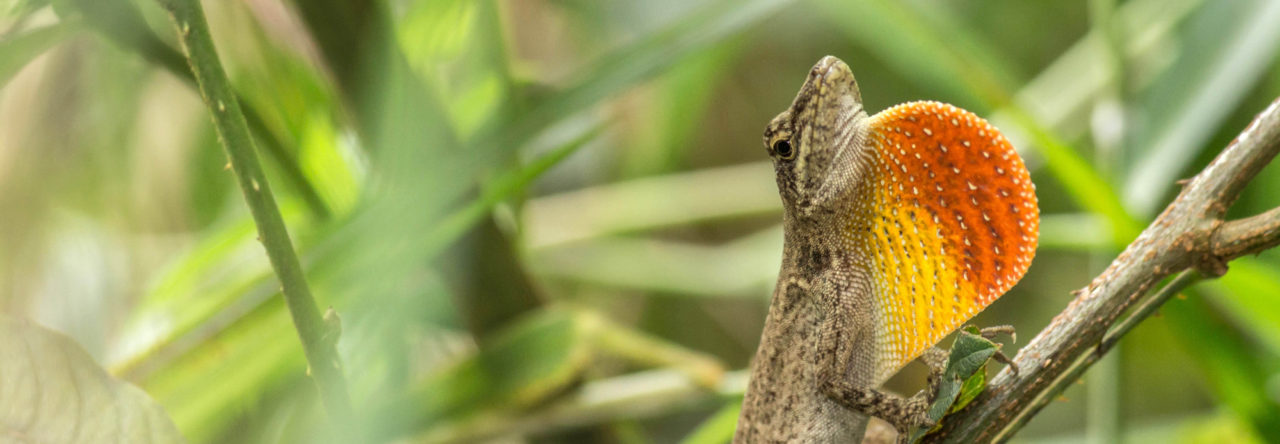
Closely related to snakes after all?
Two years ago, I wrote an AA post on lizard phylogenetics, summarizing the results of a paper by Gauthier et al. that claimed that analyses based on morphological and molecular data produced very different phylogenies. Moreover, Gauthier et al. argued that the morphological data provided absolutely no support for the phylogeny suggested by the molecular data.
The issue has now been further considered in a recent paper by Reeder et al. in PLoS One. These authors provide some new morphological data and add a tad of previously unutilized molecular data; with these data sets, they recover essentially the same disagreement in phylogenies. However, what is new in this paper is that they perform a combined analysis that analyzes morphological and molecular data together. The results of this analysis are firmly in agreement with the molecular data. To address the possibility that this is simply a result of the much greater quantity of molecular characters, the authors also conducted analyses that essentially weighted the molecular and morphological data equally. Still, the result was the tree produced by the molecular data alone.
Perhaps the most striking point in the Gauthier et al. paper was the claim that the morphological data gave absolutely no support for the molecular tree. This suggested, in turn, that if the molecular tree is correct, then morphological evolution has been extraordinarily homoplasious. However, Reeder et al. dispute this claim, finding that a number of morphological characters support the molecular phylogeny.
Reeder et al. also broke the morphological characters into six subsets: cranial characters; characters related to the jaws, teeth, and hyobranchial apparatus; characters related to the vertebral column; other postcranial osteological characters, mostly related to the limbs and limb girdles; miscellaneous morphological characters, including morphology of the osteoderms, scleral ossicles and tongue; and characters of squamation and external morphology. Their analysis found that only the cranial characters were incongruent with the molecular phylogeny, and they suggested that these were the characters in which homoplasy was rampant, leading to false signal in the morphological analyses.
Overall, the authors make a strong case that the molecular phylogeny is likely to be the correct one and that morphological data, particularly cranial characters, are misleading due to homoplasy. It will be interesting to see whether and Gauthier et al. respond to these analyses.
Here is the take home message from the discussion of Reeder et al.’s paper:
Our combined analyses strongly suggest that the phylogenetic hypothesis for living squamates based on the molecular data is correct. Specifically, our results support the hypothesis that Iguania is placed with snakes and anguimorphs, and not at the squamate root (as suggested by morphological data alone). Our conclusions are based on several lines of evidence, including:
(a) combined analyses of the relevant molecular and morphological data supports the molecular placement of Iguania, even when the molecular dataset is reduced to only 63 characters, less than one tenth the size of the morphological dataset,
(b) mapping morphological characters on the combined-data tree shows that there is actually hidden support for the molecular hypothesis in the morphological data (similar to the number of characters supporting the morphological
hypothesis),
(c) the morphological dataset is dominated by misleading phylogenetic signal associated with convergent evolution of a burrowing lifestyle and associated traits, and a similar problem associated with feeding modes may explain the morphological placement of Iguania, and
(d) the morphological hypothesis is unambiguously supported by only one of six subsets of the morphological data. Conversely, we find no evidence for hidden signal supporting the morphological hypothesis among the 46 genes in the molecular dataset; no genes support this hypothesis. Further, the failure of some genes to fully support the molecular placement of iguanians in Toxicofera seems to be associated with sampling error (i.e. shorter genes).

















